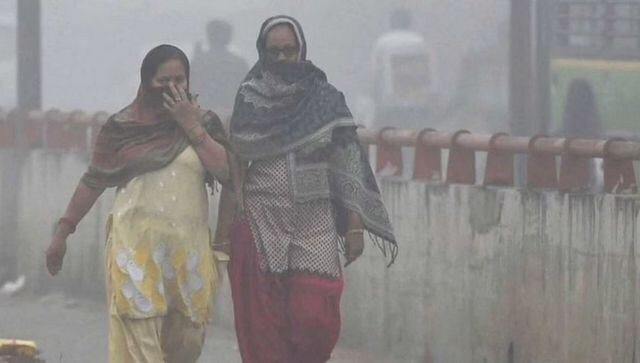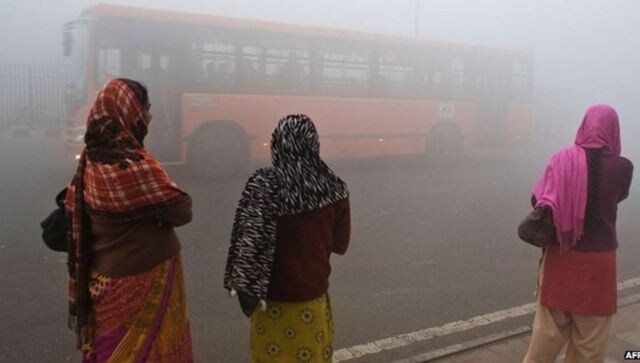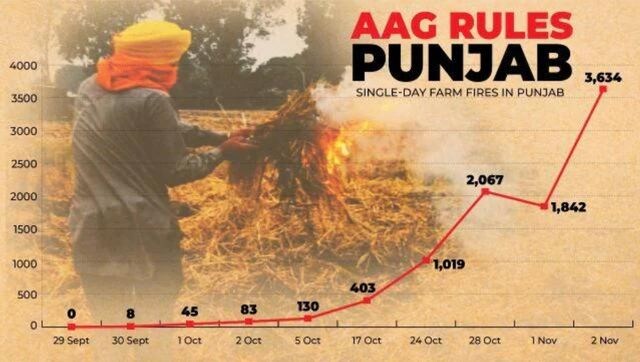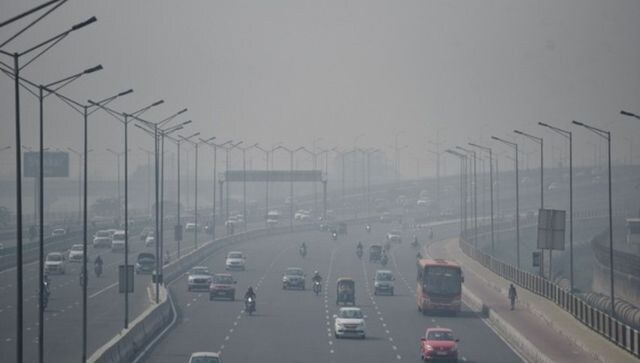India’s burden: How air pollutants are causing a rise in anaemia among women
A new study has linked long-term exposure to fine particulate matter (PM 2.5 air pollutants) to high anaemia prevalence among women of reproductive age in India. It says the cases can be reduced if the country meets its clean air targets

A study has linked exposure to fine particulate matter with rise in anaemia among women in India. PTI (Representational Image)
We all know how air pollution affects our health, causing respiratory and other long-term issues. Now, a new study has linked exposure to fine particulate matter (PM 2.5 air pollutants) to high anaemia prevalence among women.
According to the study, ‘Reducing the burden of anaemia in Indian women of reproductive age with clean-air targets’, the pervasiveness of anaemia among women of reproductive age (15 to 49 years of age) would reduce 53 per cent to 39.5 per cent if India fulfils its clean air targets.
In September, the Centre had announced it has set a goal of 40 per cent reduction in particulate matter concentration in cities covered under the National Clean Air Programme (NCAP) by 2026.
What is anaemia? How has the study linked PM 2.5 pollutants to anaemia in Indian women? What does data show about the prevalence of anaemia in the country? Let’s take a closer look.
What is anaemia?
The National Heart, Lung, and Blood Institute (NHLBI) defines anaemia as “a condition that develops when your blood produces a lower-than-normal amount of healthy red blood cells.”
Those suffering from anaemia lack enough red blood cells to supply oxygen to their body’s tissues which result in tiredness and weakness. The other symptoms include shortness of breath, dizziness, headaches, or an irregular heartbeat, as per NHLBI.
This blood disorder can be temporary or long-term and can range from mild to severe, says Mayo Clinic.
Anaemia caused due to iron deficiency is the most common.
Women in the menstruating age group can suffer from regular iron deficiency due to loss of blood during period and hence they are more prone to develop anaemia.
Other types of anaemia include that induced by vitamin deficiency and inflammation, and hemolytic among others.
What is PM 2.5 and what does the study say?
PM 2.5 particles are fine inhalable particles with diametre of around 2.5 micrometre or smaller. They are emanated from fires and emissions from vehicles, power plants, and industrial units.
Published in the Nature Sustainability journal at the end of August, the study was conducted by researchers from institutions and organisations in India – Indian Institutes of Technology (IITs) Delhi and Bombay, the US and China.
According to the research that used multiple datasets, including the National Family Health Survey and PM 2.5 levels in several districts, for every ten microgram/cubic metre of rise in ambient PM 2.5 exposure, the average anaemia prevalence among women increases by 7.23 per cent.

The study found a major contributing sector to air pollution is industrial. AFP (Representational Image)
“Our results suggest that the transition to clean energy would accelerate India’s progress towards the ‘anaemia-free’ mission target,” the study says.
The research also found that among PM 2.5 sources, sulphate and black carbon, are more connected with anaemia than organic carbon and dust.
It also said that the major contributing sector to pollution is industrial, followed by the unorganised, domestic and power, road dust, agricultural waste burning and transport sectors.
“While malnutrition is the biggest risk factor for anaemia, air pollution is still a risk factor. Particulate matter composition matters. We are trying to generate cumulative evidence to be able to comment which type of particulate matter is more toxic, so when you try to control them, you prioritise more toxic pollutants. Because the composition is linked to sources, ultimately at the policy level, you will have to target those sources,” Sagnik Dey, professor at IIT-Delhi told Mongabay-India.
ALSO READ: Diseases and deaths: How air pollution turns Delhi deadly every year
Anaemia in children
In 2021, another study carried out by researchers from IIT-Delhi and Harvard University had linked exposure to high levels of air pollutants to anaemia among children under five years of age in India.
Published on 7 January, the study noted that for every 10 micrograms per cubic metre increase in exposure to PM 2.5, there is a 1.90 per cent surge in average anaemia prevalence among children, ThePrint reports.
The researchers further stated that various studies in the past have shown that exposure to pollutants, especially PM 2.5, can lead to systemic inflammation.
Chronic systemic inflammation is the second top cause of anaemia, ThePrint reports.
Anaemia in India
India has a large population affected by anaemia.
As per the National Family Health Survey (NFHS-5, 2019-21), children below five years, adolescent girls and boys, and pregnant women are being affected by the disorder.

Women and children are the most affected by anaemia in India. PTI (Representational Image)
The latest report stated that at least 67 per cent children (6-59 months) have anaemia, while 57 per cent of women and 25 per cent of men (in the 15-49 age group) suffer from the condition.
It also showed that anaemia has seen an uptick with cases rising from 53 per cent in 2015-16 to 57 per cent in 2019-21 among women. While in men, anaemia has increased from 23 per cent to 25 per cent, the survey added.
The survey was a huge blow to the Union government’s Anaemia Mukt Bharat programme which had set a target of reducing the prevalence of anaemia by three per cent per year among children, adolescents and women in the 20–49 age group, between 2018 to 2022.
With inputs from agencies
Read all the Latest News, Trending News, Cricket News, Bollywood News,
India News and Entertainment News here. Follow us on Facebook, Twitter and Instagram.
also read

FP Analysis: Why parali or stubble burning has choked Delhi-NCR only in the past decade?
Delhi AQI is running at 500-800 range and burning of crop residue is the single biggest source of poor air quality in the national capital

Delhi's air quality remains in ‘very poor’ category, CAQM bans construction work, except Central Vista
According to CAQM, the winds are forecasted to be calm in the coming days and the wind direction is likely to change course frequently and there is a high likelihood of the pollutants getting trapped in the region and not getting dispersed effectively

Choked: Why Delhi’s air pollution problem isn’t just a winter issue
Air pollution in Delhi is a constant. In 2022, the Capital has recorded only two ‘good’ air days so far. Vehicular emissions and construction activity throughout the year are the major contributing factors causing Delhiites breathing problems
